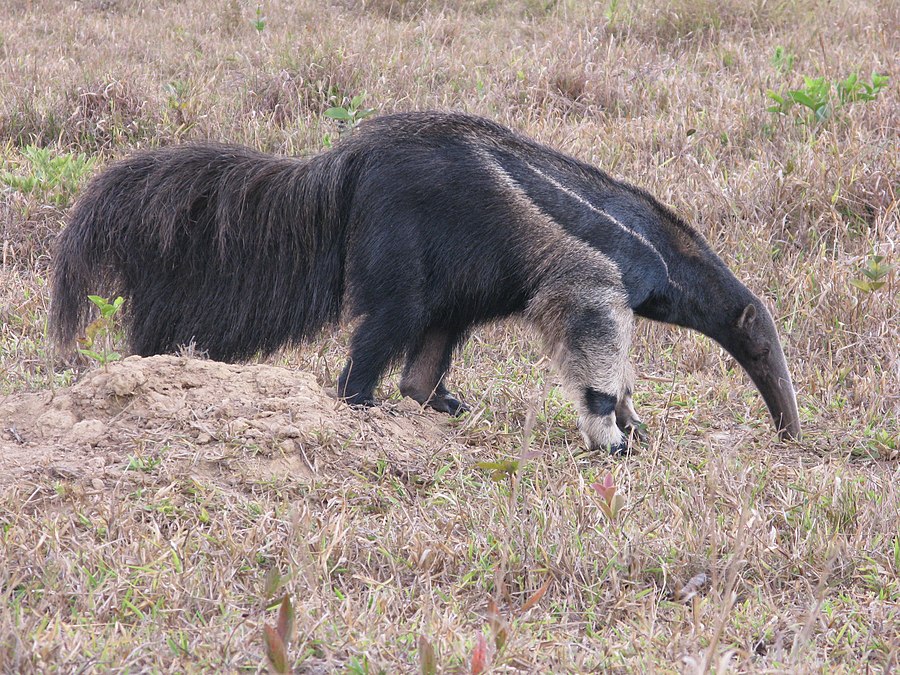Facts About Giant anteater
The giant anteater, often referred to as the ant bear, is a fascinating insectivorous mammal native to Central and South America. Distinguished as the sole extant member of the genus Myrmecophaga, it belongs to the order Pilosa, which also includes sloths. Renowned for its terrestrial lifestyle, the giant anteater is the largest member of its family and is easily identified by its elongated snout, bushy tail, formidable foreclaws, and distinctively patterned fur.
Giant anteaters primarily feed on ants and termites. They use their powerful claws to excavate insect nests and employ their long, sticky tongues to capture their prey. These animals are predominantly solitary, except when mothers are caring for their young, during male territorial disputes, or when mating. Unfortunately, their populations are declining due to habitat destruction, wildfires, and poaching for their fur and meat, prompting the International Union for Conservation of Nature (IUCN) to list them as vulnerable.
First described by Carl Linnaeus in 1758, the giant anteater is classified alongside the semi-arboreal northern and southern tamanduas in the Myrmecophagidae family. This species diverged from sloths approximately 55 million years ago, though its fossil record is limited, with known relatives including Protamandua and Neotamandua.
Physically, the giant anteater is notable for its impressive size, elongated snout, and bushy tail. Lacking teeth, it captures insects with its adhesive tongue. Additionally, its body temperature is lower than that of most mammals, and it possesses specialized adaptations for its insectivorous diet.
Geographically, giant anteaters range from Honduras to northern Argentina. They face significant threats from human activities, leading to their vulnerable conservation status. Remarkably, they are known to defend themselves vigorously, occasionally causing severe injuries to humans.
These animals are inherently solitary, foraging in open areas and resting in forests. They are proficient swimmers and climbers, capable of traversing wide rivers. Giant anteaters communicate primarily through scent marking, and males can be notably territorial.
Regarding reproduction, giant anteaters engage in courtship and mating, with females giving birth to a single offspring after a gestation period. The mother carries her young on her back until it is weaned, around ten months of age. The young communicate with their mothers through whistles and reach sexual maturity between 2.5 to 4 years.
Culturally, giant anteaters are featured in the folklore of indigenous Amazonian peoples and have been represented in various artistic and literary works. They are often depicted as trickster figures in myths and make appearances in cartoons, mascots, and other forms of popular culture.

 Nicaragua
Nicaragua